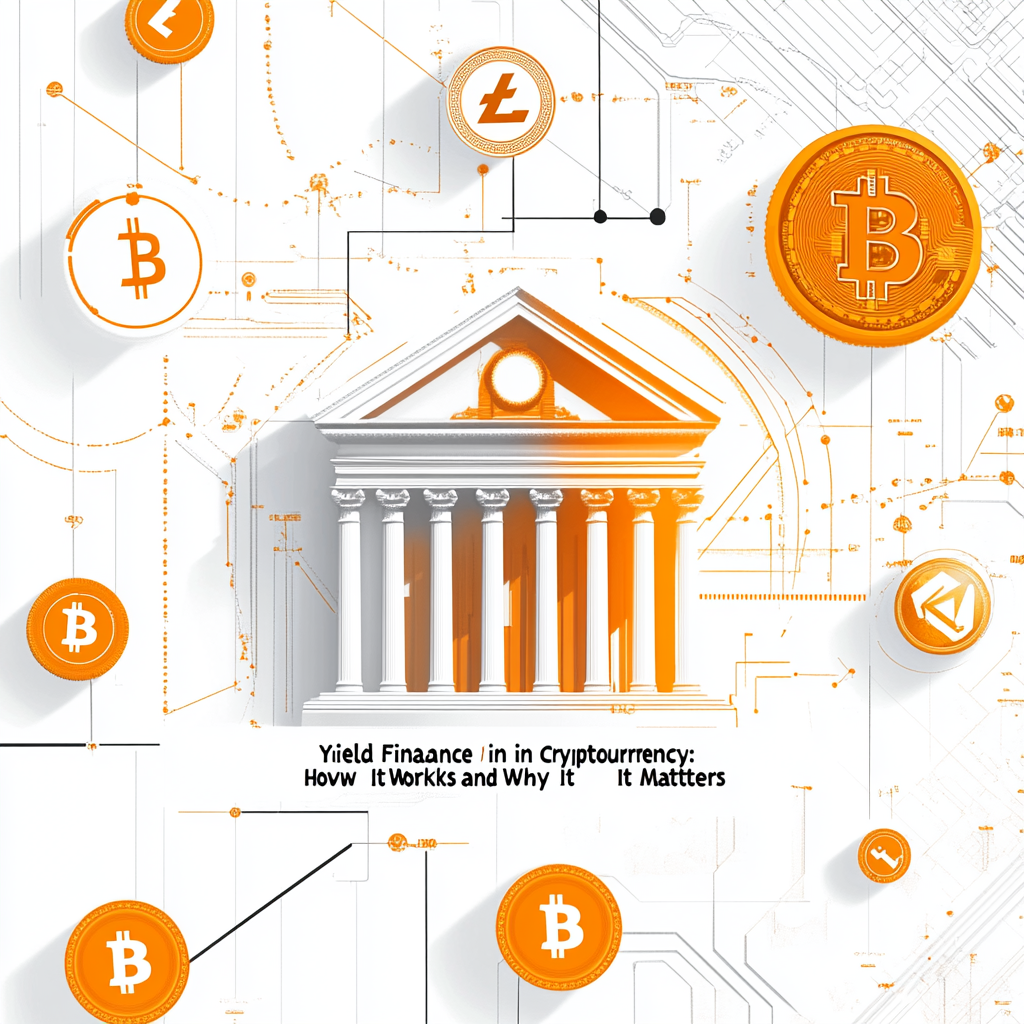The typical definition of yield is an expected return announced to a holder of a security. The total ROI is a combination of gains produced by the liquidation of assets and the yield they have produced by the time of said liquidation. When cryptocurrencies appeared in 2008, the idea of savings accounts and yields was unimaginable.
The arrival of Ethereum in the world of crypto changed everything. Suddenly, developers received a whole set of new tools that allow them to build novel financial instruments that change the way we understand finance.
Building passive income in crypto
The dream of any crypto enthusiast is to either have their dear coins to “go to the moon” making them millionaires overnight or for their tokens to produce value passively. While the first is often an unlikely scenario, the second option is already real but requires some careful thinking and smart decision-making to be efficient.Why is hunting for yields better than just holding tokens? The simplest answer is market volatility. Bitcoin is the most stable crypto in the world yet it has a 10% average annual volatility which is too unreliable for many investors to bet on it. On the other hand, you can expect high-yield pools to give you rates higher than high-yield bank accounts (usually, close to 5%) or US treasury bonds (roughly, 4% in 2024).
How are cryptocurrency yields produced?
Many people coming from the world of tradfi do not understand the underlying mechanics of the DeFi sector and the cause of outrageously high APYs offered by some protocols. The answer is quite simple and can be broken down into several parts:
- The DeFi ecosystem is incredibly competitive with over 1,400 DEXes and close to 500 other types of protocols competing for liquidity.
- The battle for liquidity can be won only by offering better terms than other protocols. However, the capacity to produce rewards in base currency is limited.
- Exchanges often issue their own native tokens that can be used for additional utility, bonuses, and protocol governance. Since the issuance of these assets is determined by protocols, they can pay out huge rewards in native tokens.
For instance, Aerodrome on Base is one of the most generous exchanges that does not have any base APYs for the vast majority of pools. Instead, they are paying in governance tokens called AERO. The price of native coins has grown by at least 1,400% since launch. You can invest in the WETH-OX pool to receive up to 270% in AERO.
Understanding token economics
The story of the Aerodrome is quite impressive. After 9 months of active trading, the token has managed to hold on to its gains. While it is noticeably cheaper compared to the ATH of $2.23 achieved in April 2024, the fact that it lost less than 38% is more than respectable. However, other tokens usually have a much worse performance and lose the bulk of their value within the first 6 months of trading.
There are several factors contributing to the dramatic price drop:
- The initial pumping by whales is a common occurrence that happens in all promising markets. It is quite easy to spot the rapid growth of a token driven by multiple large trades made by a couple of huge wallets. After the price is increased to an acceptable for whales level, they quickly sell all their assets.
- The inflationary pressure is the main driving factor of a prolonged slump that almost every single digital asset eventually enters. The question is not “if” but “when” it happens. The vast majority of native tokens do not have anti-inflationary mechanisms.
- Some protocols enforce long periods of inactivity preventing investors from liquidating their assets immediately after acquiring them. In some cases, the initial price can be set very high. When tokens hit the market, it collapses immediately.
It is important to learn how tokenomics works in each project to estimate potential profitability and avoid becoming the last “bag holder”. While some projects like PancakeSwap or Curve DAO manage to produce sufficient value for token holders, the vast majority of protocols fail to do so.
Engaging with DeFi protocols
Yields can be produced by interacting with almost all protocols in the DeFi sector. Some of them are base APYs paid in tokens that you invest in pools. In other cases, you are providing stablecoins and mainstream coins in exchange for native tokens. Depending on your preferences, risk style, and conviction, you may be swayed in one direction or another.
Let’s talk about some interesting categories of protocols that may catch your attention:
- Decentralized exchanges are some of the earliest projects and have the most basic monetization model. They facilitate asset swaps and collect commissions. In many protocols, a portion of collected fees is used to pay liquidity providers for their contributions. Some DEXes offer great terms. The aforementioned Aerodrome has a USDC-AERO pool that pays up to 48.3% in AERO tokens.
- Automatic market makers provide the necessary service of facilitating large-volume trading and ensuring that users can easily find a good exchange rate. You can find a plethora of interesting market makers to invest in. For example, Cetus AMM on SUI has its USDC-SUI (0.25%) pool that pays 168% in base APY (primarily, SUI) and up to 47.8% in additional rewards with the 30-day mean average in November 2024 exceeding 170%.
- Lending protocols are some of the most reliable and popular platforms that produce yields for investors. Aave on Ethereum has a massive $15 billion TVL and offers a variety of pools with rates ranging from 0.01% to 15%. One of the best pools is on Ethereum. It is a single-sided USDT pool with a solid 9.86% base APY and a TVL of $136 million.
Earning on liquidity provision
An ROI of 5% over a period of 365 days is considered very good in tradfi. In decentralized finance, such numbers are not attractive enough. While whales that are concerned with preserving their wealth are comfortable with putting their assets into low-yield pools, the vast majority of capital holders are constantly moving their coins to pools that produce the best value.
One of the most popular destinations for contemporary investors is the Solana network where memecoins and scams proliferate alongside promising decentralized protocols. Here you will find a very interesting DEX called Orca. It offers some of the craziest pools out there:
- SOL-XYZ is a $30 million TVL pool with an outrageous base APY of 2,712% and a 30-day average of 1,356%.
- SOL-PEPU is a memecoin-focused pool with a large TVL number of $57 million and up to 1072% APY that has a 30-day mean average of 4,035%.
- SOL-USDC is a stablecoin pool that has a 193% base APY paid in SOL and a $20 million TVL making it one of the most profitable pools for USDC holders.
Providing liquidity can be incredibly profitable for many investors and guarantee them ROIs that outperform the vast majority of tradfi instruments. Even under shaky market conditions, SOL tokens can be sold quickly and produce a massive profit.
Yield optimization in DeFi
The best thing about this ecosystem is that there are so many different ways to allocate capital effectively that many investors simply cannot decide which one to use. These incredibly profitable options coexist with apparent underperformers that dilute the pool of available options and make it hard to build a balanced portfolio.
However, there are many ways to achieve a consistent performance that easily outpaces all tradfi investments.
Focusing on cross-chain yields
The DeFi ecosystem is not Ethereum alone. You can find excellent DeFi protocols on Base, Solana, BSC, Aptos, and many other chains. By using various bridges and multi-chain DEXes, you can switch between different pools and ecosystems. If you are a proactive investor who likes to adjust positions to achieve the most optimal performance in the short term, you will be more than happy to work in the DeFi sector.
Below are several multi-chain protocols that offer excellent deals:
- UniSwap supports 26 different chains including Ethereum, Optimism, Arbitrum, and many others. The same pool can produce different outcomes depending on its native chain. For example, investing in the WETH-USDT (0.05%) pool on Ethereum yields 64.23% while the same pool on Arbitrum has a target APY of 83.18%.
- Allbridge Classic is a cross-chain protocol that can move assets from Tron to Ethereum and back. While APYs here are quite low compared to other options, it is a reliable money-maker. Investing in the USDT pool on Tron or Ethereum will bring you 0.07% with a 30-day average in November reaching 0.08%.
One of the reasons the multi-chain approach works for many investors is the DeFi composability allowing many dapps to interact freely or have enough similarities to make transitioning from one platform to another as smooth as possible. Note that you should be interacting with different networks to extract the most value out of cross-chain investment opportunities. Moving assets around can be expensive even for whales.
Are there merits to automated yield strategies?
The sheer number of pools that you can interact with makes it close to impossible for an average investor to find the best place to park capital at any given moment. You have to take into consideration many factors including transaction costs, withdrawal fees, forfeited gains, and more before transferring assets from one pool to another.
There are several ways to go around this issue:
- Yield aggregators are platforms that interact with multiple pools seeking the best conditions and extracting the most value out of your assets. These work especially well for stablecoin holders since these assets are the best for yield farming and liquidity mining.
- Strategy providers like Rivo.xyz are great at simplifying the investment process for newcomers to the industry. The platform is focused on its DeFi marketplace offering a rich selection of carefully designed strategies that you can use instead of moving assets around manually.
- Auto-compounders, as the name suggests, automatically compound yields, collect rewards and reinvest them back to improve investment outcomes. These are useful tools since they simply automate some processes and make them slightly more efficient.
Creating effective yield farming strategies
The main impact of yield in finance in cryptocurrency is the proliferation of novel investment instruments allowing investors to find new ways to build high-performance portfolios. Many strategies that involve the use of yield farming protocols and liquidity mining consistently beat every asset class available to tradfi investors.
However, all crypto investors must be aware of the unique dangers associated with the DeFi sector and employ unconventional risk management techniques to protect their investment from impermanent loss, price volatility, and smart contract inadequacies.









